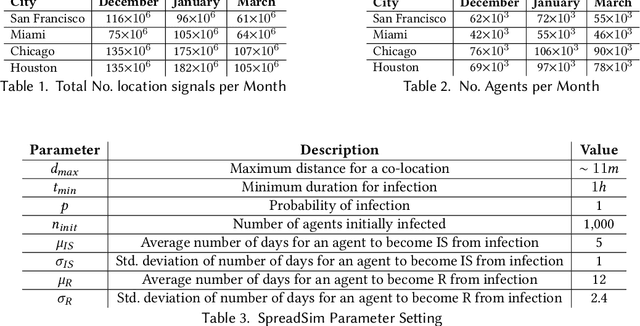Kameron Shahabi
Mitigating Simplicity Bias in Deep Learning for Improved OOD Generalization and Robustness
Oct 09, 2023Abstract:Neural networks (NNs) are known to exhibit simplicity bias where they tend to prefer learning 'simple' features over more 'complex' ones, even when the latter may be more informative. Simplicity bias can lead to the model making biased predictions which have poor out-of-distribution (OOD) generalization. To address this, we propose a framework that encourages the model to use a more diverse set of features to make predictions. We first train a simple model, and then regularize the conditional mutual information with respect to it to obtain the final model. We demonstrate the effectiveness of this framework in various problem settings and real-world applications, showing that it effectively addresses simplicity bias and leads to more features being used, enhances OOD generalization, and improves subgroup robustness and fairness. We complement these results with theoretical analyses of the effect of the regularization and its OOD generalization properties.
Towards Accurate Spatiotemporal COVID-19 Risk Scores using High Resolution Real-World Mobility Data
Dec 14, 2020



Abstract:As countries look towards re-opening of economic activities amidst the ongoing COVID-19 pandemic, ensuring public health has been challenging. While contact tracing only aims to track past activities of infected users, one path to safe reopening is to develop reliable spatiotemporal risk scores to indicate the propensity of the disease. Existing works which aim to develop risk scores either rely on compartmental model-based reproduction numbers (which assume uniform population mixing) or develop coarse-grain spatial scores based on reproduction number (R0) and macro-level density-based mobility statistics. Instead, in this paper, we develop a Hawkes process-based technique to assign relatively fine-grain spatial and temporal risk scores by leveraging high-resolution mobility data based on cell-phone originated location signals. While COVID-19 risk scores also depend on a number of factors specific to an individual, including demography and existing medical conditions, the primary mode of disease transmission is via physical proximity and contact. Therefore, we focus on developing risk scores based on location density and mobility behaviour. We demonstrate the efficacy of the developed risk scores via simulation based on real-world mobility data. Our results show that fine-grain spatiotemporal risk scores based on high-resolution mobility data can provide useful insights and facilitate safe re-opening.
 Add to Chrome
Add to Chrome Add to Firefox
Add to Firefox Add to Edge
Add to Edge